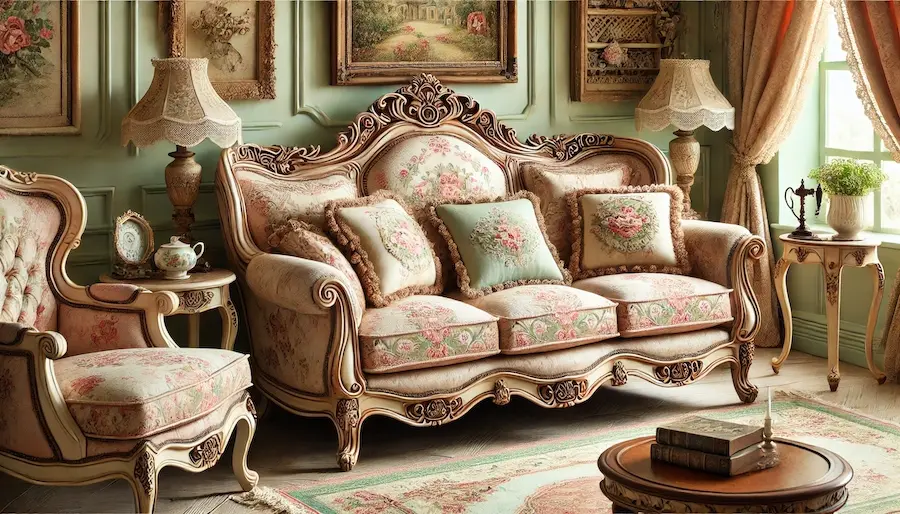Vintage sofas are cherished for their timeless elegance, intricate craftsmanship, and the unique charm they bring to contemporary interiors. This article delves into the world of vintage sofas, exploring their history, key features, applications, and considerations for selection.
Introduction to Vintage Sofas
A vintage sofa refers to a seating piece that embodies the design aesthetics and craftsmanship of a previous era, typically ranging from the 18th to mid-20th centuries. These sofas are not only functional furniture items but also serve as historical artifacts that reflect the cultural and artistic trends of their time.
History and Origins of Vintage Sofas
The evolution of the sofa is a fascinating journey through time:
- 17th Century: The introduction of the Knole settee, originating from Knole House in Kent, England, marked a significant development. This early sofa featured adjustable side arms and a deep seat, designed more for formality than comfort.
- 18th Century: The Georgian era brought the camelback sofa, attributed to Thomas Chippendale. Characterized by its elegant arched back and scrolled arms, it became a symbol of refined taste.
- 19th Century: The Victorian period popularized the Chesterfield sofa, notable for its deep button tufting and rolled arms, exuding opulence and comfort.
- Early 20th Century: The Art Deco movement introduced sleek and geometric designs, with sofas featuring bold colors and luxurious materials, reflecting the era’s modernist influences.
Key Features of Vintage Sofas
Vintage sofas are distinguished by several hallmark features:
- Craftsmanship: Handcrafted wooden frames, often with intricate carvings, showcase the artisan’s skill.
- Upholstery: Luxurious fabrics such as velvet, brocade, or leather were commonly used, with patterns and colors indicative of the period’s fashion.
- Design Elements: Features like tufted backs, rolled arms, cabriole legs, and ornate detailing are prevalent, each style reflecting its specific era’s aesthetic preferences.
Applications of Vintage Sofas
In modern interiors, vintage sofas serve both functional and decorative purposes:
- Statement Pieces: A vintage sofa can act as a focal point, adding character and a sense of history to a room.
- Eclectic Decor: Incorporating a vintage sofa into contemporary settings can create a harmonious blend of old and new, enhancing the overall aesthetic appeal.
- Thematic Interiors: For period-style rooms or themed decor, vintage sofas provide authenticity and depth, reinforcing the desired ambiance.
Considerations When Choosing a Vintage Sofa
When selecting a vintage sofa, consider the following:
- Authenticity: Verify the sofa’s provenance to ensure it is a genuine piece from the claimed era.
- Condition: Assess the structural integrity and upholstery condition. Restoration may be necessary, and it’s essential to factor in these potential costs.
- Dimensions: Vintage sofas may have proportions that differ from modern furniture, so ensure it fits appropriately within your space.
- Comfort: While aesthetically pleasing, some vintage sofas may not offer the comfort levels expected today. Testing the seating experience is advisable.
Conclusion
Vintage sofas encapsulate the elegance and craftsmanship of bygone eras, offering a unique blend of functionality and artistry. Incorporating a vintage sofa into your home not only enhances its aesthetic appeal but also preserves a piece of furniture history, allowing the charm of the past to enrich contemporary living spaces.
